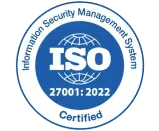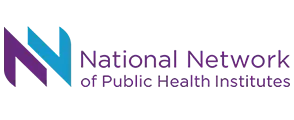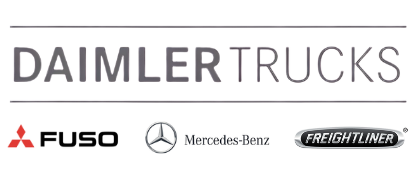Every missing asset drains
time, trust & moneystop the leak now
With SharePoint Enterprise Asset Management Software, managing your assets becomes effortless. Easily integrated with Microsoft 365, it saves time, enhances workflows, and boosts efficiency.

Trusted by 11700+ businesses from 167 countries


























Simplified SharePoint Enterprise Asset Management Software with AI Integration
Track and manage your assets effortlessly with our AI-powered SharePoint Asset Management Software. With automated workflows and smart solutions, Microsoft asset management becomes effortless—so you can focus more on growing your business.

Why Choose Our Asset Management 365
Asset Management 365 offers a comprehensive, secure, and intelligent approach to asset tracking. Simplify your operations and boost productivity with Microsoft enterprise asset management.
Cyber Security
Cyber Security in GCC & GCC High within the Microsoft environment places high importance on stringent measures to protect sensitive government data, ensuring security with robust defenses and Microsoft applications.
GCC & GCC High
Our apps are built for GCC & GCC high tenants of US Federal clouds.
SOC2 Type II Certified
Our apps ensure security, compliance, and data protection
MS Azure Marketplace
Our apps are tested by Microsoft and available on MS Azure Marketplace
Microsoft Appstore
Our innovative applications are available on the Microsoft Appstore.
Customer Support
Your Support Team merges technical prowess with sincere care, fostering trust through expertise and empathy. They build lasting relationships, transcending mere service to create meaningful connections.
AI Enabled Apps
Our innovative apps are built with the options of Azure AI, Copilot, and custom AI solutions.
Swift Deployment
Choose any deployment method—Teams, Outlook, or SharePoint—that suits your preferences.
Modern UI/UX
Every app is crafted using the latest Fluent UI, ensuring seamless functionality across all devices.
Free Updates
Our valued subscribers enjoy unlimited support, enhancements, features, and updates.

Powerful Integrations
Effortlessly integrate with Intune, SCCM, Desktop Central, Power Automate, and Power BI to automate processes and gain deep insights into asset data.

Effortless Asset Assignment and Retrieval
Quickly assign or reclaim assets in just a few clicks, ensuring smooth workflows with minimal disruption with Enterprise Asset Management Software

Fast and Easy Deployment
Get started in just 10 minutes! With Enterprise Asset Management Software, you can quickly to deploy manage your assets without delay.

Zero Trust Security Model:
Protect your asset information with our Zero Trust approach, securing data within Microsoft 365 using advanced security protocols.

Advanced Search Capabilities
Utilize AI and SharePoint tools for faster asset searches, saving time and enabling your team to focus on what matters most.

Audit Logs for Transparency
Track asset activities with detailed audit logs, monitor changes, enhance transparency, ensure accountability, and maintain compliance with industry regulations effectively.

Quick Action for Enhanced Productivity
Use Quick Action buttons to swiftly assign, update, or track assets, minimizing effort, enhancing efficiency, and saving valuable operational time.

Customizable Naming Conventions
Design custom asset names to enhance tracking accuracy, improve organization, streamline identification, and ensure better management across your entire system.

Detailed Asset Utilization Reports
Create detailed, easy-to-read asset usage reports to enhance resource optimization, improve decision-making, and ensure efficient Microsoft asset management strategies.

Visual Asset Thumbnails
Include thumbnail images for instant visual asset identification, enhancing organization, streamlining tracking, and improving overall Microsoft asset management efficiency.

Structured Sub-Categories
Structure assets into hierarchical sub-categories for easier searches, enhanced organization, improved tracking, and more efficient overall Microsoft asset management.

Seamless Asset Tracking
Monitor all assets efficiently, minimizing manual effort, enhancing organization, streamlining processes, and boosting overall productivity in Microsoft asset management.

Self-Service Portal for Employees
Employees can easily request assets and monitor their status in real-time using a user-friendly, intuitive, and efficient self-service portal.

Microsoft 365 Compatibility
Integrated effortlessly with Microsoft Teams, Outlook, and SharePoint, Asset Management 365 enables smooth collaboration across teams.

Grouped Asset Views
Categorize assets by type, location, or status to create a structured, user-friendly view, enhancing organization and simplifying asset management.

Built for Security and Compliance
IT Asset Management Software is built with Microsoft’s advanced security and compliance standards, ensuring your sensitive asset data is always protected.

Role-Based Access Control
Manage asset access with role-based permissions, ensuring data security, preventing unauthorized changes, and enabling seamless collaboration across teams efficiently.

Work Smarter with Asset Management 365
Leverage smart solutions to handle the complexities of software asset management, allowing your team to focus on what matters most: optimizing resources and boosting productivity.
Work Smarter with IT Asset Management Software
Let smart solutions handle the heavy lifting, freeing your team to focus on what truly matters—efficient asset management. SharePoint Enterprise Asset Management 365 helps you automate, organize, and streamline asset tracking effortlessly. Whether your business is small or large, Microsoft enterprise asset management empowers you to work smarter, optimize resource utilization, and enhance productivity without the hassle.
Responsive - Any Device Access
Access and manage asset data effortlessly from desktops, tablets, or smartphones, anytime and anywhere with Enterprise asset management Software.
Customizable Fields and Templates
Add custom fields to capture specific asset details and use ready-made templates to simplify managing different asset categories with Enterprise asset management Software
Clear and Easy Knowledge Base
Store troubleshooting guides, maintenance tips, & FAQs to help teams find quick solutions without needing additional support.
Maintenance Scheduling
Easily set and track maintenance schedules for assets to reduce downtime and ensure they remain in optimal condition.
Multi-Language Support
Manage assets easily across global teams with seamless support for multiple languages, time zones, and regional settings.
Predictive Maintenance Insights
Get proactive maintenance alerts powered by AI, reducing unplanned downtime and extending asset life with Enterprise asset management Software.
Usage Trend Analysis
AI tracks and analyses asset usage patterns, providing actionable insights to optimize resource allocation and improve efficiency.
Automated Asset Assignment
Accelerate operations by using AI to assign assets based on location and team requirements, enhancing efficiency and workflow with Enterprise asset management Software.
Get Real-Time Notifications
AI-powered alerts let you respond quickly to maintenance delays, asset management shortages, and performance problems.
Asset Categorization
Use AI to organize and categorize assets into relevant groups, ensuring efficient tracking and seamless management with Enterprise asset management Software
Visual Recognition with Thumbnails
Create thumbnails for assets using AI to enhance visual identification, making it easier to track and manage assets efficiently with Enterprise asset management Software
Key Features of SharePoint Enterprise Asset Management Software
Empower your team to manage and track every asset with precision and control, ensuring every resource is properly accounted for with Microsoft Enterprise Asset Management.
Stands Out Benefits of Asset Management Software
SharePoint asset management streamlines the way you track and manage assets. Easily assign, monitor, and retrieve items to improve efficiency, reduce costs, and keep operations running smoothly.
Increased Efficiency
Simplify Microsoft asset management to save time and reduce effort. Automate routine tasks and organize resources, so your team can focus on more priority tasks.
Cost Optimization
Track asset usage and performance to identify underutilized resources, eliminate redundancies, and make data-driven decisions that reduce costs and maximize ROI.
Improved Asset Visibility
Gain full visibility of all your assets, keeping everything organized and accounted for. This clarity allows for better planning and resource allocation.
Enhanced Compliance and Security
Ensure adherence to industry standards and regulations with built-in compliance tools. Keep sensitive asset data safe with robust security measures.
Better Decision-Making
Create detailed insights and reports to make informed decisions about asset purchases, maintenance schedules, and resource allocation.
Scalability for Growth
Adaptable to organizations of all sizes, Asset Management 365 grows with your business, making it a long-term solution for evolving needs.
Improved Accountability
Monitor asset activity closely with detailed audit logs and real-time tracking, reducing the chances of loss, misuse, and errors.
Saves Time
Reduce the time spent on manual tracking and troubleshooting by automating routine tasks and simplifying easy access to asset information.
Sustainability Focus
By tracking asset lifecycles and promoting optimal use, Asset Management 365 contributes to reducing waste and supporting sustainable practices.
Boost Productivity with Seamless Integrations
Effortlessly set up, customize, and manage your cloud-based SharePoint asset management software with intuitive tools that streamline tracking, optimize usage, and boost efficiency.
Power Automate
Save time by automating asset updates, notifications, and approval processes for streamlined asset management workflows.
Power BI
Generate clear reports to track asset performance, usage, and costs, enabling smarter business decisions.
Power Apps
Leverage AI chatbots to instantly answer common questions about asset availability, locations, or maintenance schedules.
Power Virtual Agent
Create custom apps to improve enterprise asset management and integrate seamlessly with Asset Management 365.
These capabilities ensure that your organization can track assets seamlessly, manage resources effortlessly, and maximize operational efficiency like never before.
Asset Management 365 Plans
Standard
$0
per month, billed yearly
Standard Plan Features
- 20 users
- 2 support tickets per annum
- Free updates via MS store
- Assign Assets
- Return Assets
- Track assets
- Asset life cycle history
- Vendor tagging
- Asset Status
- Categories & Sub categories
Premium
$19999
per month, billed yearly
Everything in Standard, and…
- 150 users
- Add-on $10 for every 50 users
- Tag Projects
- Free updates with support
- Custom email templates
- MS Intune Integration
- Depreciation
- Book Assets
- Bar & QR code scanner
- Export QR Codes and Barcodes
- Asset expiry reminders
- Return date reminders
- Add custom columns
Enterprise
$29999
per month, billed yearly
Everything in Premium and…
- 250 users
- Add-on $15 for every 50 users
- Sync M365 Licenses
- Asset approval workflow
- Digitally Signed Acknowledgment
- Desktop Central Integration
- SCCM Integration
- Maintenance Module
- Software Module
- Export Audit Logs
- API connectivity
- Customize with Power Automate
- Power BI & Power Apps Integration
- Location based roles
- Custom forms
- Dedicated Account Manager
Using Azure? now you can buy on Azure Marketplace or using your enterprise agreement











Customer Testimonials
Hear from satisfied customers that have transformed their team connectivity with Asset Management 365.
SharePoint Consultant, Raymond West
California
Finance Manager, Exeevo
New York
IT Director, Frontier Waste Solutions
Texas, US
Sharepoint Developer, Recor Medical
Washington, US
Business Manager, Cerilon
Canada
Director of IT, JConnelly
New York
System Admin
Oregon, US
IT Manager, Pallas LLP
England, UK
IT Officer, HanmiGlobal Saudi
Saudi Arabia
ICT Manager, SMT Shipping
Europe
Barton Associates
Cofounder
Vice President of Operations
Head Of Information & Technology
Director of Infrastructure
Schedule a Free Personalised Demo or Free Trail
Discover the full potential of our product with a complimentary trial today!
%202%20(1)_UZpBvPU7A.png?updatedAt=1736170678886)
Frequently Asked Questions
Does SharePoint have asset management Software?
Yes, integrating SharePoint with an Asset Management Software (AMS) enables businesses to efficiently track and manage assets in a centralized platform, streamlining processes, reducing duplication, and ensuring secure, organized asset sharing across teams.
How to create an asset library in SharePoint?
Creating an Asset Library in SharePoint is easy:
- Click on + New and select App.
- If you’re using the classic view, go to Lists, Libraries, and Other Apps, then click Add an App.
Note: You need permission to create lists. If you don’t have this permission, you won’t see the + New or Add an App options.
Why is IT asset management software important in business?
IT Asset management software is crucial for businesses as it helps track and manage both software and hardware assets. It allows employees to easily locate assets, monitor their usage, and track any changes, ensuring efficient and organized asset management across the organization.
What is the main function of with Enterprise asset management Software?
The main function of Enterprise asset management Software. is to track, organize, and manage a company’s assets throughout their lifecycle. This includes monitoring their location, usage, maintenance, and value to ensure efficiency, reduce costs, and maximize asset performance.
How does the licensing work in Asset Management software?
Asset Management software works with a user-based license covering roles like admin or asset manager and those assigned assets. Users can manage multiple assets, up to 5,000 for 1,000 users. Exceeding the limit? Email [email protected] or contact support.
Does Asset management software suits for all business?
Yes, an asset management tool is ideal for businesses of all sizes, from small startups to large enterprises with extensive assets. These tools are designed to scale and can be customized to meet the specific needs and budgets of different organizations.
What types of assets does asset management 365 manage?
Asset Management 365 manages assets like software licenses, service agreements, cloud application subscriptions, hardware, office equipment, and other valuable resources.
Can I connect SharePoint asset management software with ERP and financial systems?
SharePoint asset management software integrates with ERP systems to streamline financial processes and ensure accurate asset data synchronization. This eliminates duplicate data entry, reduces manual errors, and improves decision-making with real-time financial insights. Organizations benefit from unified data, better resource allocation, and enhanced productivity across departments.
Is there barcode scanning in Enterprise asset management Software?
Yes, many Enterprises asset management Software integrate barcode scanning to enhance asset tracking and simplify record-keeping.
Does asset management software support multiple languages and global teams?
Yes, asset management software offers multi-language support, enabling global teams to manage assets seamlessly. It accommodates various time zones and regional settings, ensuring smooth collaboration and efficient asset management across locations.
How does SharePoint Asset Management Software help organizations improve asset tracking and compliance?
Organizations looking to optimize their IT hardware, software licenses, and equipment can benefit greatly when SharePoint Asset Management Software is implemented, as it centralizes asset data within Microsoft 365. This solution not only streamlines tracking and reporting but also reduces manual effort, improves compliance, and ensures secure, scalable management through SharePoint lists, Power Automate workflows, and AI-driven automation.
* This is a limited-time promo and can be withdrawn at any time without notice. # Includes one free customization (up to 4 hours, worth $400)






















